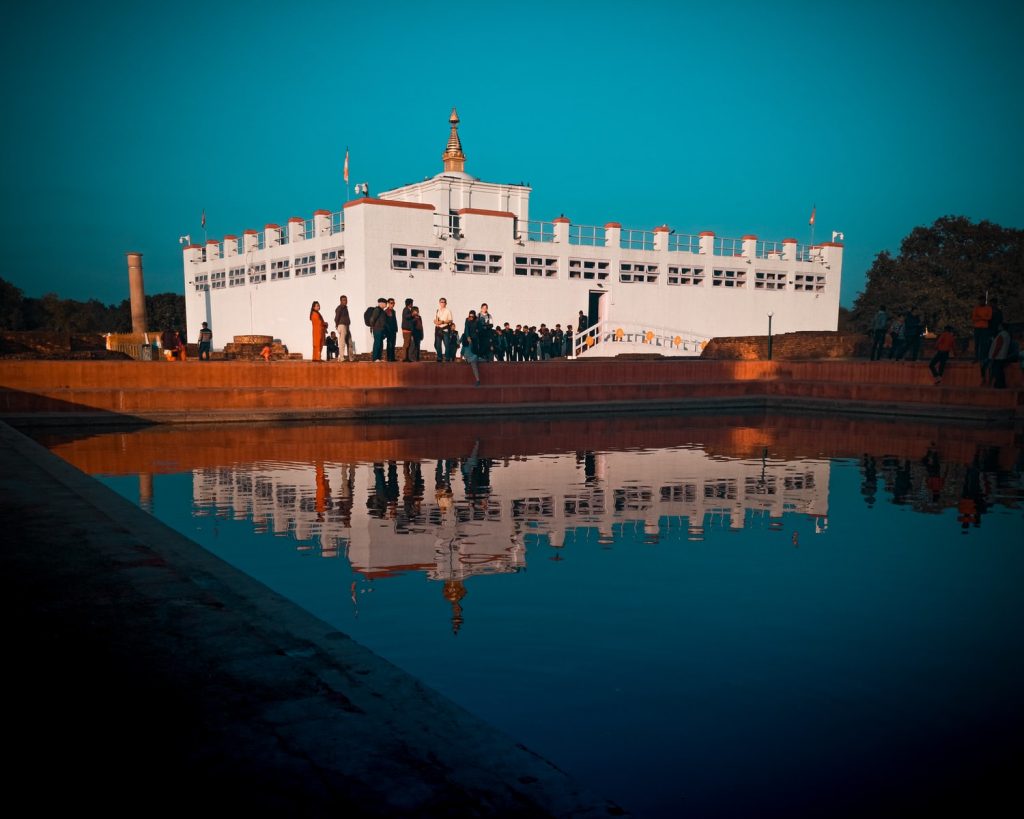8 Day(s) 7 Night(s)
Destination: Rajgir
Buddhism, Jainism, and serenity
Today Rajgir is well known for its some very awesome Hindu and Jain temples which attract a number of tourists; there is also some healthy winter resort with warm water ponds. It is believed that these ponds contain some medicinal properties which help in the cure of many skin diseases. Nestled in a verdant valley guarded by five hills, and hot springs with medicinal properties, Rajgir is a scenic town located in the modern-day Nalanda district of Bihar. This naturally fortified destination is one of the most ancient sites of learning in India. Here Lord Buddha set in motion his second wheel of law and spent twelve seasons meditating and preaching.
During the time of Lord Buddha, Rajgir was the capital of the flourishing Magadha empire under the reign of the noble king Bimbisara. It was renowned before as a place for a congregation of spiritual leaders and scholars. So when Prince Siddhartha renounced his royal life to become an ascetic, he too came to Rajgir. It is said that here he met king Bimbisara, who was so impressed by the young man that he offered him half his kingdom. But Siddhartha left the city, promising the king to return after he had found the answers to his questions.
Places to see in Rajgir
Griddhakuta Hill
Griddhakuta Hill or vulture peak, due to the odd shape of a protruding rock that resembles the beak of the bird of prey, the Griddhakuta hill on the outskirts of Rajgir is a sacred Buddhist site. Lord meditated in the caves on the hill. Here He delivered the Lotus Sutra sermon, which promises salvation for all, and the Prajnaparamita sutra, or the perfection of wisdom. A little further away are the ruins of a large monastery called Jivakamravana Vihara at the mango grove presented to Lord Buddha by Bimbisara’s royal physician Jivaka, who cared for the Lord when he was injured.
Venuvan Vihara
A couple of kilometers from the Griddhakuta hill is Venuvan Vihara or the Monastery of the Bamboo Grove that was Bimbisara’s first gift to the Lord. Nearby is the Karanda tank, where Lord Buddha bathed.
There are several modern attractions related to Buddhism here, like the impressive white marble Shanti Stupa built by Japanese devotees.
Rajgir is sacred for the Jains too and there are several Jain temples located in and around it.
Indasala cave
At Indasala cave Lord Buddha is said to have delivered one of his most profound discourses, the Sakkapanha Sutta. He also uttered verses 206, 207, and 208 of the Dhammapada while staying here. The cave is at the base of a sheer cliff halfway up the side of Giriyek mountain. Further up is Hansa stupa. It is a tough trek to the cave but offers a panoramic view of the mountains and the green valley.
Jethian
A small village around 20 km from Rajgir, Jethian is an important pilgrimage site for Buddhist devotees. It is said that when king Bimbisara heard Lord Buddha was on his way to Rajgir, he walked out of the city with his entourage to greet him. The two met at Lattivana village in a beautiful grove, now called Jethian. There are several Buddha statues and ruins of Buddhist structures in and around Jethian. There is a large mound with a tank, believed to be the remains of the stupa built over Supatittha Chaitya, the place where Lord Buddha stayed in Jethian.
Situated close to the mound are some magnificent statues of Buddha.
Nalanda: The Ancient Seat of Knowledge
The most popular Mahavihara of ancient times, a significant Buddhist seat of academic excellence is today a UNESCO World Heritage site. Nalanda offers a vibrant substance of spirituality, history, culture, architecture, and tourism.
This city houses one of the world’s oldest and finest residential universities which itself was an architectural masterpiece. Although in ruins, the entire complex presents a pretty picture and is flocked by tourists day in and day out. It has “viharas” or monasteries to the east and “chaityas” or temples to the west. In addition to this, the complex houses a charming little museum, which has a collection of several original Buddhist stupas, Hindu and Buddhist bronzes, coins, terracotta jars, a sample of burnt rice, etc. The district is believed to be a cradle of religions. Considering the rich heritage and historical importance, it is a hot tourist destination.
Things to do In Rajgir
Buddhist travelers Huen Tsang and Fa Hian visited Rajgir during the Mauryan and Gupta times. Ropeway, Rajgir Heritage Museum, Peace pagoda and a visit to Nalanda University ruins are a must.
Top Hotels in Rajgir
| Name & Type | Class | Style |
| Indo Hokke Hotel | 5 | Luxury |
| The Rajgir Residency Hotel | 4 | Luxury |
| Gargee Gautam Vihar Resort | 4 | Luxury |
| Kripanidhi Retreat Rajgir | 4 | Luxury |
Best Time to Visit
The town of Rajgir experiences three main seasons and these are summers, monsoon, and winter seasons. In summer temperatures can vary from a low of 20 degrees Celsius to a high of around 40 degrees Celsius during the summer season. Winters are cold and temperatures can drop below 10 degrees Celsius frequently.
Best Time to Visit Rajgir:
The best time to visit Rajgir is between October and March when the weather is pleasant which the peak season to go to Rajgir is. The Chhath Puja honoring the consort of the sun god or Chhathi Maiya is organized during this period, so you can participate in the festivities at this time of the year.
How to reach Rajgir
Airport: The nearest airport is in Patna, 101 km away.
Railway Station: Though Rajgir itself has a railway station yet the nearest convenient railhead is at Gaya, 78 km.
Road: Rajgir is connected by road to Patna – 110 km, Nalanda – 12 km, Gaya – 78 km.




